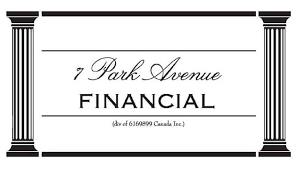|
Transform Your Cash Flow: Working Capital Solutions
Beyond Banks: Modern Working Capital Finance Options
You Are Looking for Working Capital Finance!
Bridging the Gap To Access Working Capital
You've arrived at the right address! Welcome to 7 Park Avenue Financial
Financing & Cash flow are the biggest issues facing businesses today
Unaware / Dissatisfied with your financing options?
Call Now! - Direct Line - 416 319 5769 - Let's talk or arrange a meeting to discuss your needs

"Working Capital is the lifeblood of business" - Richard Branson
7 Park Avenue Financial originates business financing solutions for Canadian Businesses – We offer Working Capital Finance and cash flow solutions – Save time and focus on profits and business opportunities
7 Park Avenue Financial: “Canadian Business Financing with the intelligent use of experience”
Working Capital Finance Solutions
Have you checked the patient recently for oxygen and blood status?
Of course, we’re talking about your business, i.e. working capital finance, which is a key measure of business credit health.
Working capital is calculated by subtracting current liabilities from the company's assets, including cash, inventory, and receivables.
IS THE WORKING CAPITAL CRUNCH YOUR COMPANY'S SILENT GROWTH KILLER?
The constant challenge of cash flow pressures can often threaten your day-to-day operations. No business wants to decline orders or not take advantage of supplier discounts while watching its competitor take market share. Talk to the 7 Park Avenue Financial team about giving you the ' oxygen' —i.e., cash flow!- to fund growth.
WHAT IS WORKING CAPITAL?
Working capital is a financial metric that measures a company’s liquidity and ability to meet its short-term obligations.
It is calculated by subtracting a company’s current liabilities from its assets. This metric is essential for a company’s day-to-day operations, providing the necessary funds for expenses such as salaries, rent, and suppliers.
Working capital ensures that a business can continue its operations without interruption. A company’s working capital can be positive or negative, depending on the balance between current assets and liabilities.
IMPORTANCE OF WORKING CAPITAL
Working capital is crucial for a company’s short-term financial health.
A positive working capital indicates that a company has sufficient liquid assets to cover its short-term expenses, ensuring smooth operations and financial stability. On the other hand, negative working capital can lead to cash flow problems, making it difficult to meet obligations and potentially leading to bankruptcy.
Effective working capital management is essential to maintain a stable financial position and ensure a company can meet its short-term obligations without stress.
UNDERSTANDING THE WORKING CAPITAL FINANCE FORMULA
Does a working capital loan need seem necessary as your business grows? Let’s examine the why and, more importantly, the ‘how’ of cash flow financing in Canada.
CALCULATING WORKING CAPITAL
The working capital formula calculates the difference between current assets and current liabilities, which is crucial for assessing a company's short-term financial health.
Working capital is calculated using the following formula:
Working Capital = Current Assets - Current Liabilities
Current assets include cash, accounts receivable, inventory, and other liquid assets that can be converted into cash quickly.
Current liabilities encompass accounts payable, taxes, wages, and other short-term debts that must be paid within a year. By calculating working capital, companies can assess their short-term financial health and identify areas that may require improvement to ensure liquidity and operational efficiency.
WHAT IS YOUR WORKING CAPITAL REQUIREMENT?
It is not hard to determine why working capital finance is so heavily focused in Canadian businesses—it’s simply because one's ability to manage and access cash flow alternatives becomes the ultimate measure of short-term financial health.
Net working capital, defined as the difference between a company's current assets and liabilities, is crucial in assessing short-term financial health.
It is calculated by subtracting current liabilities from current assets. It plays a significant role in managing finances, including liquidity and the need for additional funding in scenarios of negative working capital.
We say short-term because your overall capital structure and debt/equity relationship are the other pieces of the business finance puzzle. Today, we’re focusing on short-term health!
You know you are in good shape from a business cash flow perspective when you are able to meet your short-term obligations—typically, those are payables and any loan payments that become due monthly within the year.
If your cash on hand, accounts receivable, and inventory turnover cannot meet those obligations consistently …… you need a working capital management solution that might include a revolving credit facility.
The reality is that cash flow fluctuates, and there are times when you have what bankers call a bulge requirement—it is those times when you need that access to working capital we spoke of.
So, how do you determine what type of business credit financing you need and, more importantly, how much?
Sophisticated larger firms use the capital budgeting process to determine asset needs and the required investment type.
It’s essentially the mix of financing your company—i.e., owner equity, debt, and financing of short-term assets / current assets—that is our focus—‘ working capital’!
The good news about working capital finance is that if it is done properly, it doesn’t incur debt or reduce owner equity—it just increases cash flow and business credit access.
To some extent, the term ‘ loan ‘ in working capital reflects a line of credit scenario, not adding more debt to your balance sheet. Fixed assets are typically financed via term loans or equipment financing solutions.
WORKING CAPITAL MANAGEMENT
Working capital management involves overseeing a company’s current assets and liabilities to ensure it has sufficient funds to meet its short-term obligations. Effective working capital management includes:
-
Managing accounts receivable and payable to optimize cash flow.
-
Maintaining optimal inventory levels to avoid excess or shortage.
-
Monitoring and managing cash flow to ensure liquidity.
-
Identifying and addressing potential cash flow problems proactively.
By implementing these strategies, companies can improve their short-term financial health, reduce the risk of cash flow issues, and maintain a stable financial position.
TYPES OF WORKING CAPITAL FINANCE
In Canada, it is possible to get a working capital term loan, which is known as sub-debt for larger and medium-sized companies. Payments are fixed. The loan is generally unsecured and based on your cash flow ability to repay, historically and projected.
OTHER TYPES OF A WORKING CAPITAL LOANS
If that is not the solution for your firm, what is it? The other solution is a true bank operating facility if, and sometimes that’s a big if, you meet bank criteria for lending. Other real-world and more probable solutions for working capital finance business credit are:
Asset-based lines of credit
Working capital facilities of a non-bank nature around inventory and receivables
Tax Credit Financing
Receivable financing via an invoice discounting facility
Sale leasebacks
Uncommon Takes On Working Capital
- Working Capital Finance can reduce overall borrowing costs by capturing early payment discounts.
- Seasonal businesses often outperform year-round competitors by leveraging strategic working capital financing.
- Companies with strong working capital management attract better talent due to operational stability.
DID YOU KNOW?
- 82% of business failures are due to poor cash flow management
- Working capital loans average 47 days to repay in Canada
- 65% of Canadian SMEs seek working capital financing annually
- Manufacturing sectors utilize 40% of all working capital finance
- Average SME working capital loan size: $150,000
KEY TAKEAWAYS
-
Cash conversion cycle optimization drives working capital efficiency
-
Receivables management directly impacts available funding
-
Strategic timing of supplier payments maximizes capital utilization
-
Inventory turnover rates determine financing needs
-
Revenue forecasting enables proactive capital planning
CONCLUSION - WORKING CAPITAL LOANS & OTHER SOLUTIONS
Working capital cash flow financing is not necessarily a ' loan ' per se, but options are available for business credit financing in Canada.
As we have shown, you need to determine when you need that capital and why it’s essential to have standby facilities available.
Call 7 Park Avenue Financial, a trusted, credible, and experienced Canadian business financing advisor, to learn how to source your proper working capital and cash flow needs in your business model and industry.
FAQ: FREQUENTLY ASKED QUESTIONS / PEOPLE ALSO ASK / MORE INFORMATION
What is working capital finance?
Financing working capital is a common practice for businesses with inconsistent cash flows. This type of financing is used to finance day-to-day operations and expenses such as payroll, accounts payable, etc.
A company's current assets, such as receivables and inventories, are typically financed to provide additional cash flows. On the balance sheet, current assets are divided by current liabilities to calculate working capital and the working capital ratio. A number less than one in that calculation demonstrates a negative working capital position.
What are the types of working capital financing?
Different types of working capital finance are available to Canadian businesses as a financing option- Solutions to fund short-term debt include:
Traditional bank lines of credit
Asset-based revolving credit facilities
Receivable financing/invoice financing for a non-bank working capital line of credit
Merchant cash advances/business credit cards
Supplier financing for domestic and international trade
Short-term working capital loans and merchant advances
Purchase order financing
Companies will only pay interest on the amount of facility used at any given time.
A personal guarantee by the business owner is typically required on most working capital financing solutions for many businesses.
How does Working Capital Finance improve business stability?
-
Ensures consistent cash flow for operations
-
Enables strategic inventory purchases
-
Supports payroll and overhead costs
-
Provides buffer for seasonal fluctuations
-
Maintains vendor relationships
What makes Working Capital Finance different from traditional loans?
-
Faster approval process on a working capital finance solution
-
More flexible terms
-
Based on business performance on everyday operations
-
No fixed monthly payments
-
Scales with your business
What security is required for Working Capital Finance?
-
Typically secured by accounts receivable on the company's balance sheet
-
Inventory can serve as additional collateral
-
Personal guarantees and business owner's personal credit score may be required
-
Credit scores influence terms and interest rates
-
Asset values determine funding limits
How does the application process work?
-
Online application submission
-
Document verification
-
Business performance review
-
Credit assessment
-
Funding approval and setup
What are working capital ratios?
Working capital ratios are essential for evaluating a company’s short-term financial health. The most common working capital ratios include:
-
Current Ratio: Current Assets / Current Liabilities
-
Quick Ratio: (Current Assets - Inventory) / Current Liabilities
-
Working Capital Ratio: Working Capital / Total Assets
These ratios provide insights into a company’s ability to meet its short-term obligations and maintain financial stability. By analyzing these ratios, companies can identify areas for improvement and implement effective working capital management strategies to enhance their financial health.

' Canadian Business Financing With The Intelligent Use Of Experience '
STAN PROKOP
7 Park Avenue Financial/Copyright/2024

Stan Prokop is the founder of 7 Park Avenue Financial and a recognized expert on Canadian Business Financing. Since 2004 Stan has helped hundreds of small, medium and large organizations achieve the financing they need to survive and grow. He has decades of credit and lending experience working for firms such as Hewlett Packard / Cable & Wireless / Ashland Oil
|